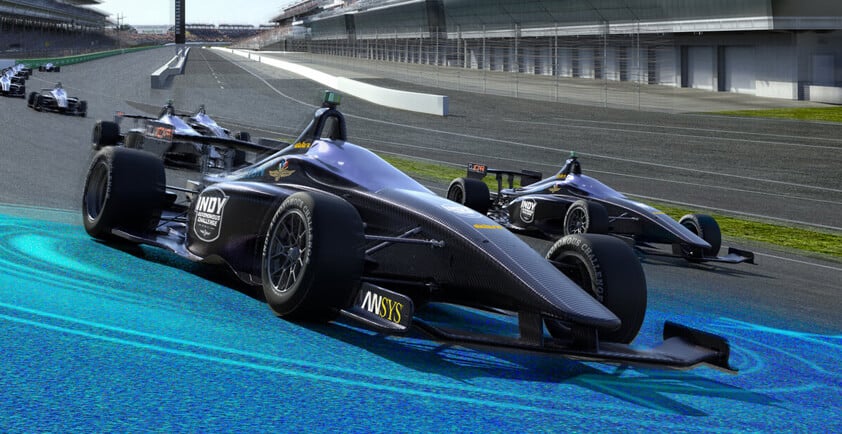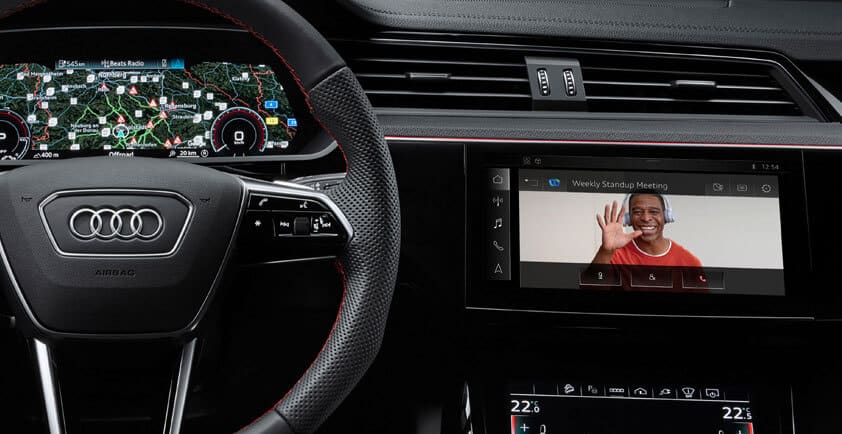

WILL AUTONOMOUS CAR RACING CHANGE YOUR BUSINESS? IT JUST MIGHT
Some days I really get excited about my job. A self-driving race car challenge? That’s just cool any way you look at it. For entertainment, for innovation, and for demonstrating the move to automation that’s already underway across industries. But before we get to that, let me give you a peek inside the first autonomous car race at the Indianapolis Motor Speedway.
Discover the Indy Autonomous Challenge
Imagine if you were a college student and you could drive a race car at THE Indy Motor Speedway. Now, take the actual driver out and that’s exactly what we’re powering.
The Indy Autonomous Challenge (IAC) is an innovation challenge across 21 global universities vying for $1.5M in prize money and the opportunity to autonomously run a Dallara AV-21 Indy race car at the Indy Motor Speedway. The money and the race are truly exciting. But, at the core, the event is all about the challenge – leaders and students coming together to collaborate, build and push the innovation boundaries to a new level. Cisco is a proud premiere sponsor and our IoT products are at the core of this competition.
What does this mean for your business?
Autonomous operations are everywhere. Labor shortages, alongside the growing need for efficiency, business resiliency and employee safety, are accelerating autonomous operations across industries like:
> Autonomous trains: Driverless trains can increase throughput by increasing the frequency of trains on a metro line and at the same time, they deliver a track record for safety that human drivers are unable to match.
> Warehouses and distribution centers: Entirely autonomous loading systems are now taking and fulfilling orders from the supply chain. Forklifts and pickers fetch the product, deliver to the pallet, wrap for shipping, and transport to the shipping dock.
> Manufacturing: Autonomous operations – like Automated Mobile Robots (AMRs) – empower manufacturers to optimize operations, free up scarce labor, and deliver higher levels of safety.
The challenge with autonomous operations and connectivity
Regardless of the application, connectivity is at the heart of any autonomous solution. And the same holds true for the Indy Autonomous Challenge. Connectivity is required to tell the cars to start their engines, synchronize GPS timing, and to identify the checkered flag. It’s also critical for safety monitoring of telemetry data and driving software performance.
We’re all familiar with standard WiFi and 5G for mobile devices communications. But these do not provide the reliability needed to ensure a safe race. When zooming around the track, hand-offs between access points must be near-instantaneous and reliable.
Hello to a new class of industrial networks
With the Indy Autonomous Challenge, Cisco IoT technologies are connecting sensors, cameras, radars, LiDAR (Light Detection and Ranging), and more with machine learning technologies to power autonomous driving. Ultra-reliable connectivity is critical to unlock that vital on-board data and make it available trackside for real time monitoring. Plus, teams must be able to take emergency control of the vehicle and safely stop if needed. Any network delay or outage can jeopardize the car’s position and its safety.
In that environment, not any network will do. Autonomous use cases require data instantly, with zero-packet loss. A new class of industrial networks is needed to handle more network bandwidth, offer zero latency data, and support edge compute for video, machine and operational data. Plus – the network needs to deliver security, scale, and reliability to adapt quickly, ensuring the vehicle is up and running – no matter what.
That’s exactly where Cisco shines
The organizers of the IAC, with engineering support from Clemson University’s International Center for Automotive Research (CU-ICAR), evaluated different wireless technologies including 5G, DSRC/V2X, and CV2X. They found that these wireless technologies could not meet the architectural, bandwidth, hand-off requirements and session management needs.
Instead, they turned to Cisco Ultra-Reliable Wireless Backhaul (formerly Fluidmesh) and Cisco Catalyst Industrial Switches for their proven history of delivering high speed reliable connectivity in motion.
> Cisco Ultra-Reliable Wireless Backhaul is a unique wireless technology with fiber-like performance for mission-critical applications. Cisco Wireless Backhaul features seamless roaming and ultra-low latency to enable the most demanding real-time applications up to 500Mbps today.
> Our Cisco Catalyst Industrial Switches offer up to 40 Gigabit throughput for the bandwidth and network speed to process information in these environments.
Racing to autonomous operations
Connecting autonomous race cars is very similar to connecting autonomous operations. Cisco has successfully automated a variety of industries including, manufacturing, warehousing/distribution, amusement parks, rail, mines, ports and more. That’s why our solutions were perfect. But don’t just take my word for it:
"Automation is a top priority over the coming year for our customers," said Richard Simmons, VP of Technology – IoT at Logicalis. "Across industrial environments, like manufacturing and distribution centers, autonomous vehicles are reducing downtime, improving productivity, and ensuring operator safety. In cargo ports, operators are controlling autonomous guided vehicles, like cranes and straddle carriers, safely and efficiently from the comfort of temperature-controlled offices. The Cisco Ultra-Reliable Wireless Backhaul network is often at the heart of all these solutions."
"Today’s market requires [transportation] systems which are increasingly sophisticated and automated, and we cannot achieve good standards of automation without reliability to exchange data between equipment on-board, on the ground and at stations," said Giuliano Zannotti, Project Manager, Leitner. "Compared to the past, there are now also connecting video signals, intercom end PLCs and data transmissions. All these requirements were met in quite a brilliant way thanks to the use of Cisco Ultra-Reliable Wireless Backhaul technology."
Author - Vikas Butaney - VP | GM of Cisco IoT, Internet of Things (IoT) Business Group













